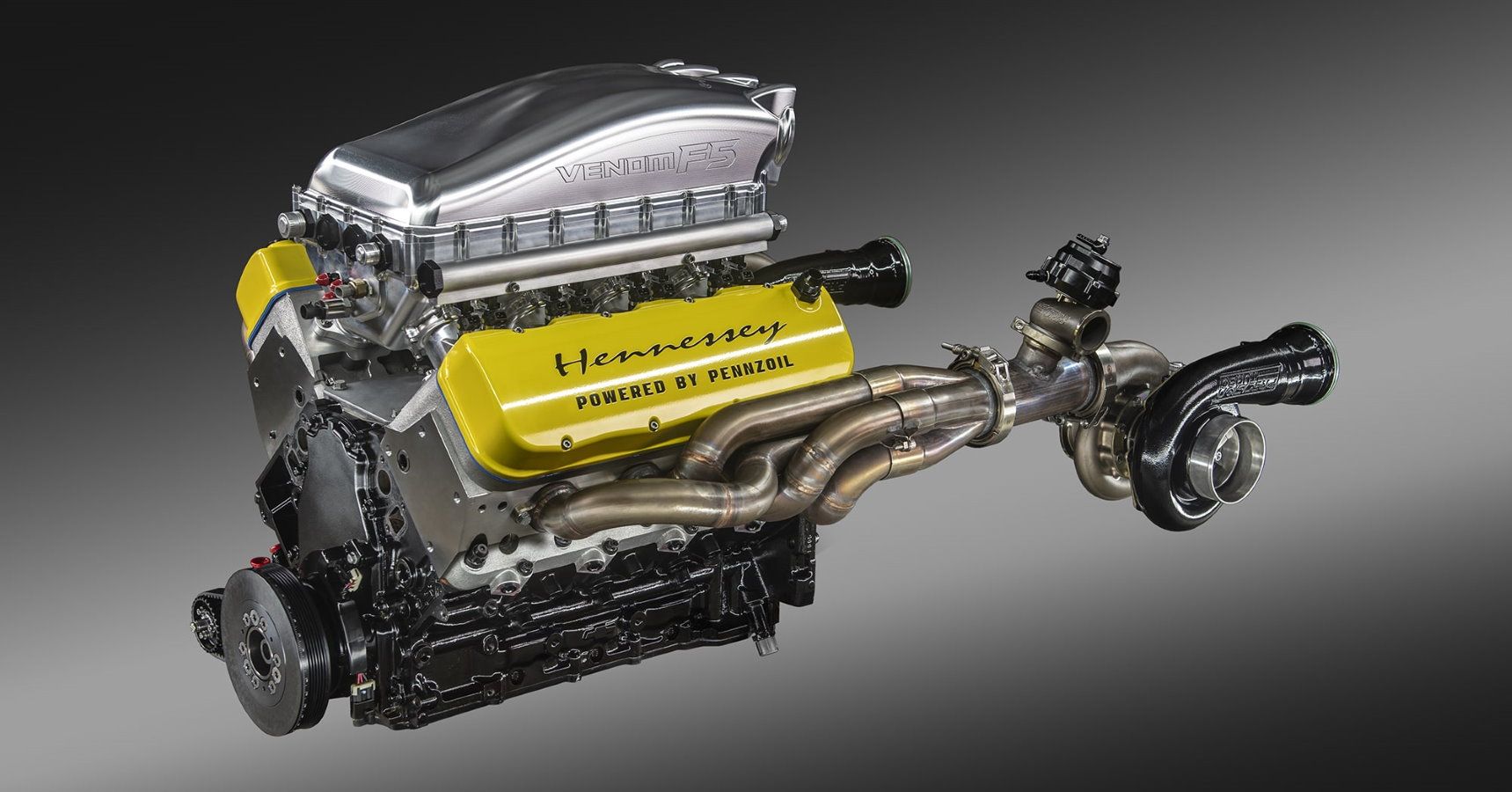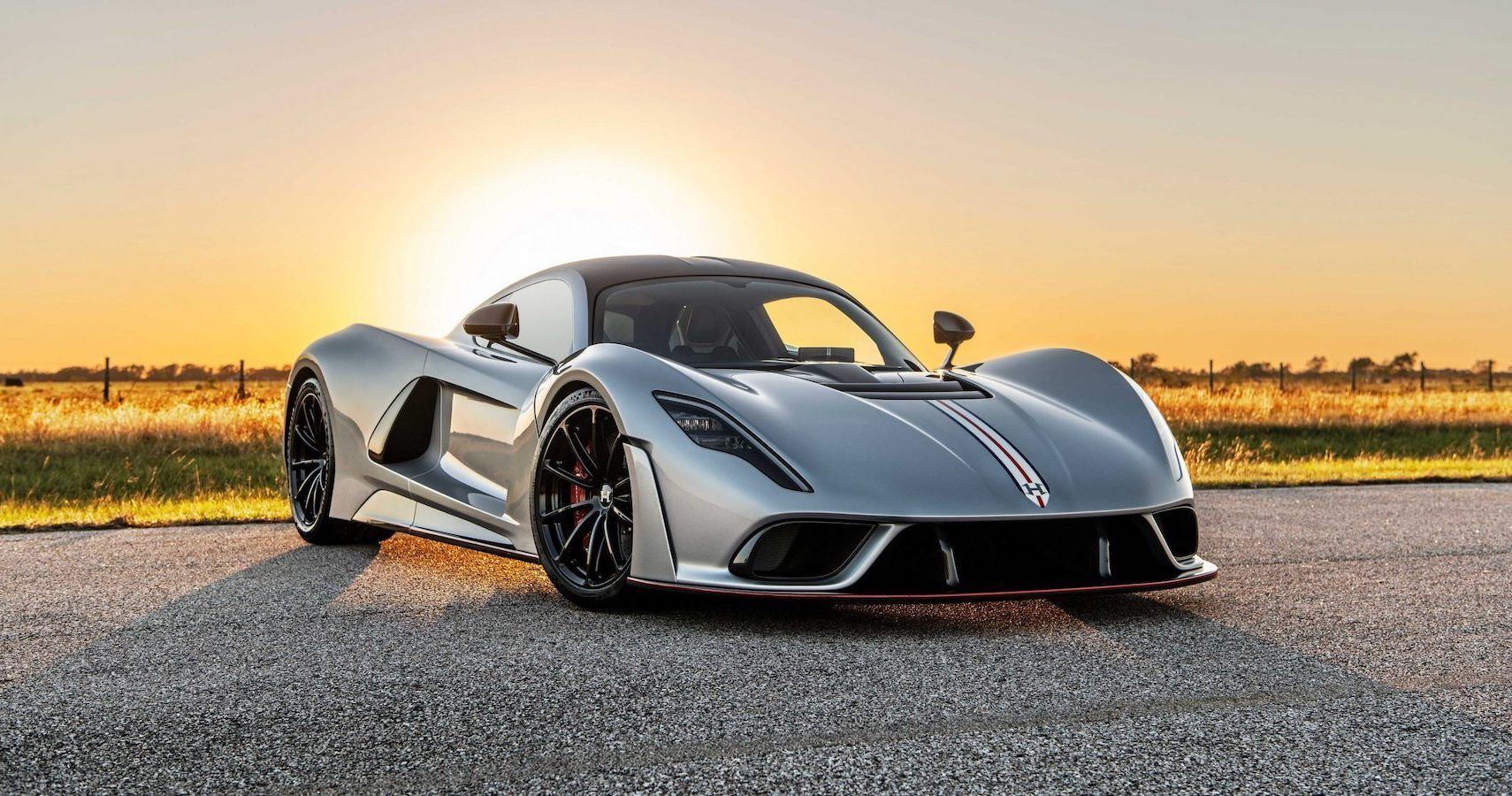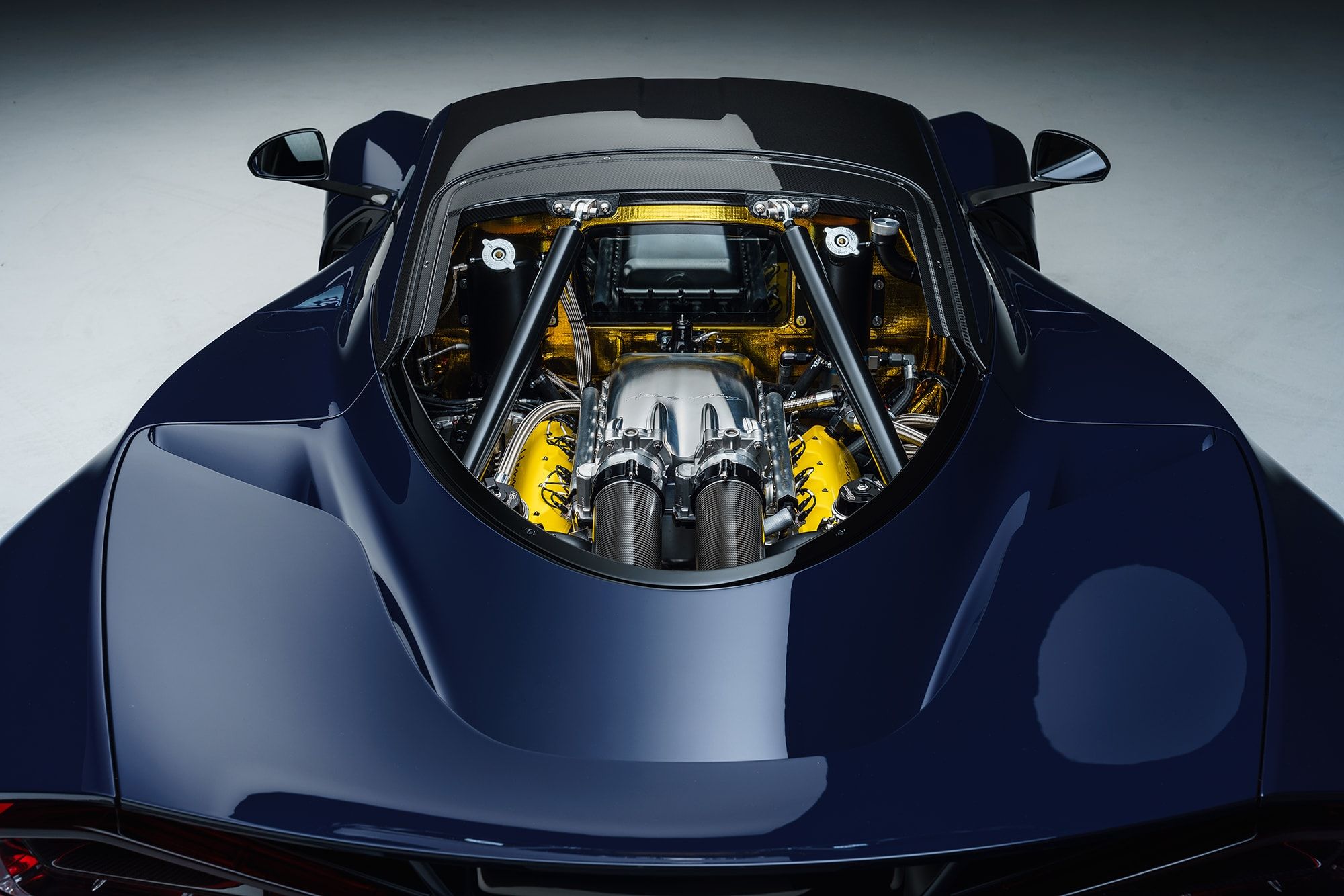If you roll in gearhead circles, then you probably know all about the Hennessey Venom roadster – the incredibly powerful and bespoke hypercar built from scratch by the globally renowned Hennessey Special Vehicles. This time, we give equal attention to the 1,817 horsepower engine, aptly named “Fury” propelling the car.
If you thought 1,800 horses is astounding, you aren't alone. In fact, the people that built this beast surprised themselves as well. “We exceeded our target horsepower number,” said company founder and CEO John Hennessey. “Actually, we blew our target number out of the water by delivering over 1,800 horsepower.”
He wasn’t kidding. The dyno test runs proved it. It’s as Hennessey said, “The F5 engine has a very broad power band with over 1,000 lb-ft of torque available from 2,000 to 8,000 rpm. Give it the full throttle, and it’s the most furious engine that we have ever built. Thus, we gave our F5 engine a special name: Fury.” Let’s take a closer look.
What You Should Know About Hennessey Performance Engineering
If the first thing that comes to mind when Hennessey gets mentioned is the French cognac of the same name, you probably need to read and finish this article more than anyone else. As for us, we see and hear so much about Hennessey Performance Engineering and Hennessey Special Vehicles that we even forget “Hennessey” is an Irish surname.
Recognized globally as a leading name in automotive horsepower and performance tuning, Hennessey Performance Engineering is neither Irish nor French. It’s an American manufacturer of hypercars and high-performance vehicles, founded in 1991 by a bonafide gearhead called John Hennessey. We said ‘vehicles’ because Hennessey is the go-to name for those in the serious-level business of making their fast cars faster. Their list of clients includes Jeep, Ford, Chevrolet, Dodge, GMC, and Cadillac.
When they aren’t creating monsters like the Hennessey Mammoth 1000 (the world’s most powerful pickup truck) or the supercharged Venom 775 Ford F-150, they keep busy conjuring and modifying mechanical components needed to make powerful cars even more powerful. You can find Hennessey’s main facility 45 minutes west of Houston in Sealy, Texas.
A Close Look At The Hennessey 6.6-Liter “Fury” Twin-Turbo V8-Powered Venom F5
We can't mention the incredibly powerful engine without remembering the Hennessey Venom F5. Hennessey Special Vehicles developed the Venom F5 as the successor to the Venom GT. It was and still is the world’s fastest and most powerful roadster, thanks to the fury of the 1,817-bhp V8 engine.
Take note that Hennessey Special Vehicles is a division of the 31-year-old Hennessey Performance Engineering, established in 2017. The unveiling of the exterior mock-up of the Venom F5 took place at the November 2017 SEMA Show in Las Vegas. The record-breaking open-top roadster claimed the spotlight at the gathering that year, touting a projected two seconds acceleration to 60 mph and an eye-turning 301 mph top speed.
The Venom would be Hennessey's first all-new proprietary vehicle as an accredited and titled manufacturer. It was just the perfect machine to debut the spinoff Hennessey Special Vehicles that year. The company brought on the UK-based engineering consultancy Delta Motorsport of Silverstone to help develop the Venom F5. The all-new Venom was in good hands, since Delta already produced all the previous generation Venom GT cars at its UK facility.
The Venom F5 got manufactured in Sealy, Texas. As Hennessey’s creation, it’s no surprise that the F5 looked stunning, but what really got gearheads spellbound is Hennessey’s first-ever in-house developed engine propelling the F5 to record-breaking glory.
The ‘F5’ in its name is a salute to the Fujita-Pearson scale for F5 tornadoes estimated to have had maximum winds between 261 mph and 318 mph. Hennessey developed the “Fury” engine to hurl the Venom F5 to an excess of 300 mph – just like the tornado – and sit on the throne as the world’s fastest production car.
The Hennessey 1,817-Hp 6.6-Liter “Fury” Twin-Turbo V8 Engine In Detail
To debut the first Hennessey Special Vehicles offering, the company, in partnership with Pennzoil and Shell, developed a bespoke proprietary 6.6-liter twin-turbocharged V8 engine rated at 1,817 horsepower and a massive 1,193 lb-ft of torque. They called it the “Fury.” A VMax speed-tracking system showed the “Fury” propelling the Venom F5 to a top speed of 301 mph.
The engine’s spec sheet, comprising a custom forged steel block, forged pistons with billet steel rods, a billet steel crankshaft, high-flow aluminum heads with titanium intake valves, and Inconel exhaust valves, is just as impressive as the roadster itself.
A multi-stage dry sump oiling ensures the oil pan gets thoroughly scrounged, excess air leaves the crankcase, and the system components are well lubricated, even under extreme g-force. This promotes the Venom F5's on-track durability, since the automaker envisions the car competing with high-end track-focused hypercars.
Running a 10.0:1 compression ratio, the engine uses an air-to-water intercooler system integrated into the billet aluminum intake manifold, ensuring maximum cooling of the charged air immediately before entering the cylinders. “This is a very important milestone in the building of our all-new Venom F5,” said Hennessey. “With over 1,800 bhp and a curb weight of less than 3,000 lbs, the Venom F5 will offer the best power-to-weight ratio on the market.”
It may not matter that Bugatti ended up the first to exceed the windy 300 mph top speed. Just so you know, you can still have the Hennessey Venom F5. Hennessey says it'll make 24 hardtop examples, 12 for the US and 12 for overseas customers. Just set aside $1.6 million wherever you are.




